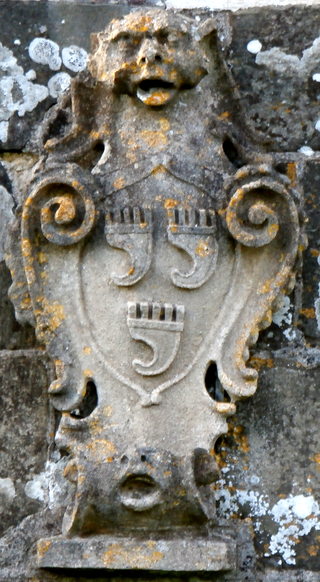
Sir Richard Grenville was a professional soldier from Cornwall, who served in the Thirty Years War, and 1638 to 1651 Wars of the Three Kingdoms. He was the younger brother of Sir Bevil Grenville, who died at Lansdowne in 1643, and grandson of Admiral Sir Richard, killed at Flores in 1591.

Sir Bevil Grenville was an English landowner and soldier who sat as a Member of Parliament for various constituencies between 1620 and 1642, although during those years there were few parliamentary sessions. When the First English Civil War broke out in August 1642, he joined the Royalists and played a leading role in their early campaigns in the West Country. He was killed in action at the Battle of Lansdowne in 1643.

Braddock is a village and civil parish in Cornwall, England, United Kingdom. The village is about seven miles west of Liskeard, and five miles south-east of Bodmin. The parish was called Broadoak until 1 April 2021.
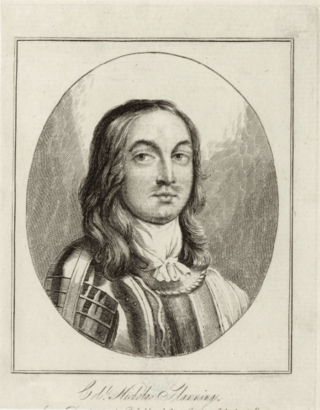
Sir Nicholas Slanning was a soldier and landowner from Devon who sat in the House of Commons from 1640 to 1642. He served in the Royalist army during the First English Civil War and was mortally wounded at Bristol on 26 July 1643.
John Trevanion (1613–1643) was an English politician who sat in the House of Commons of England from 1640 to 1643. He was a royalist officer who was killed in action in the English Civil War.

The battle of Sourton Down was a successful Parliamentarian ambush at Sourton Down, in South West England, on 25 April 1643, during the First English Civil War. After a failed attack on Royalist-held Launceston, the Parliamentarians fell back to their base at Okehampton, pursued by a Royalist army under Sir Ralph Hopton, who marched overnight, planning to attack the town at dawn.

Cornwall played a significant role in the English Civil War, being a Royalist enclave in the generally Parliamentarian south-west.

The New Cornish Tertia were four Royalist regiments of infantry raised in Cornwall and Devon by Sir Richard Grenville, 1st Baronet in 1644, during the English Civil War. As the maps aside show, Cornwall and Wales were staunch Royalist strongholds whilst South East England was held by Parliament, and the remainder of England was in dispute.

The Battle of Braddock Down was a battle of the south-western campaign of the First English Civil War. It was fought on open ground in Cornwall, on 19 January 1643. An apparently easy victory for the Royalists under Sir Ralph Hopton secured Cornwall for King Charles and confirmed Hopton's reputation as a commander. Hopton also gained respect for the mercy shown to his foe, of whom 1,500 were captured during and after the battle. The precise location of the battlefield is a matter of dispute, though English Heritage believe it to be within parkland at Boconnoc.

The Battle of Stratton, also known as the Battle of Stamford Hill, took place on 16 May 1643, at Stratton in Cornwall, during the First English Civil War. In the battle the Royalists destroyed Parliament's field army in Devon and Cornwall.

The Storming of Bristol took place from 23 to 26 July 1643, during the First English Civil War. The Royalist army under Prince Rupert captured the important port of Bristol from its weakened Parliamentarian garrison. The city remained under Royalist control until the second siege of Bristol in September 1645.

John Arundell of Trerice (1613–1644) was a landowner from Cornwall who sat in the House of Commons from 1640 to 1644. He supported the Royalist cause during the First English Civil War and was killed during the Siege of Plymouth in November 1644.
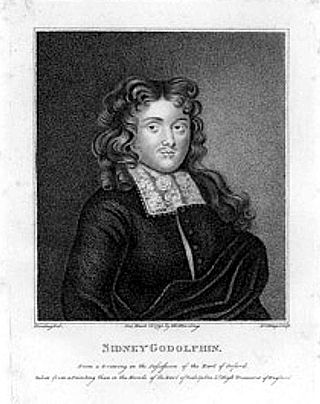
Sidney Godolphin, 14 January 1610 (baptised) to 8 February 1643, was a minor poet and courtier from Cornwall who sat in the House of Commons between 1628 and 1643. He served in the Royalist army during the First English Civil War and was killed in a skirmish near Chagford in Devon on 8 February 1643.

Charles Trevanion, c. 1594 to c. 1660, was an English landowner and politician, who was MP for Cornwall in 1625 and Sheriff from 1633 to 1634. He supported the Royalist cause during the First English Civil War, during which his eldest son John Trevanion was killed.

Colonel James Chudleigh was an English military officer, who served in the First English Civil War. Initially appointed to command the Parliamentarian garrison at Barnstaple, he showed considerable ability, and was quickly promoted.
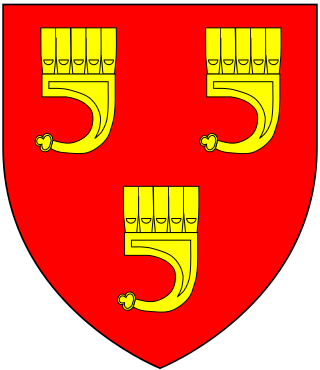
Sir Bernard Grenville was an English politician.
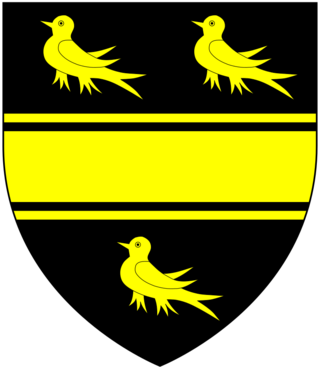
Sir George Smith of Madworthy-juxta-Exeter and Madford House, Exeter, Devon, was a merchant who served as MP for Exeter in 1604, was three times Mayor of Exeter and was Exeter's richest citizen, possessing 25 manors. He was the grandfather of George Monck, 1st Duke of Albemarle (1608-1670) KG and of John Grenville, 1st Earl of Bath (1628–1701).

The siege of Plymouth took place during the First English Civil War, when Royalist forces besieged Plymouth, in Devon, held by a Parliamentary garrison.















